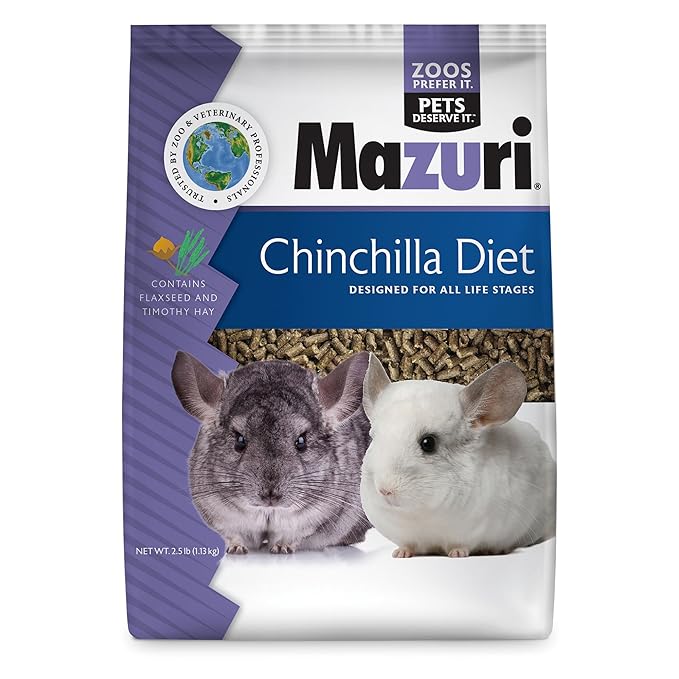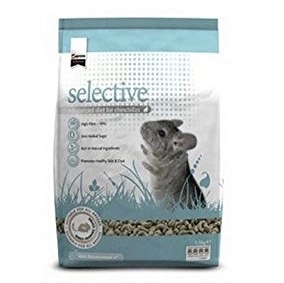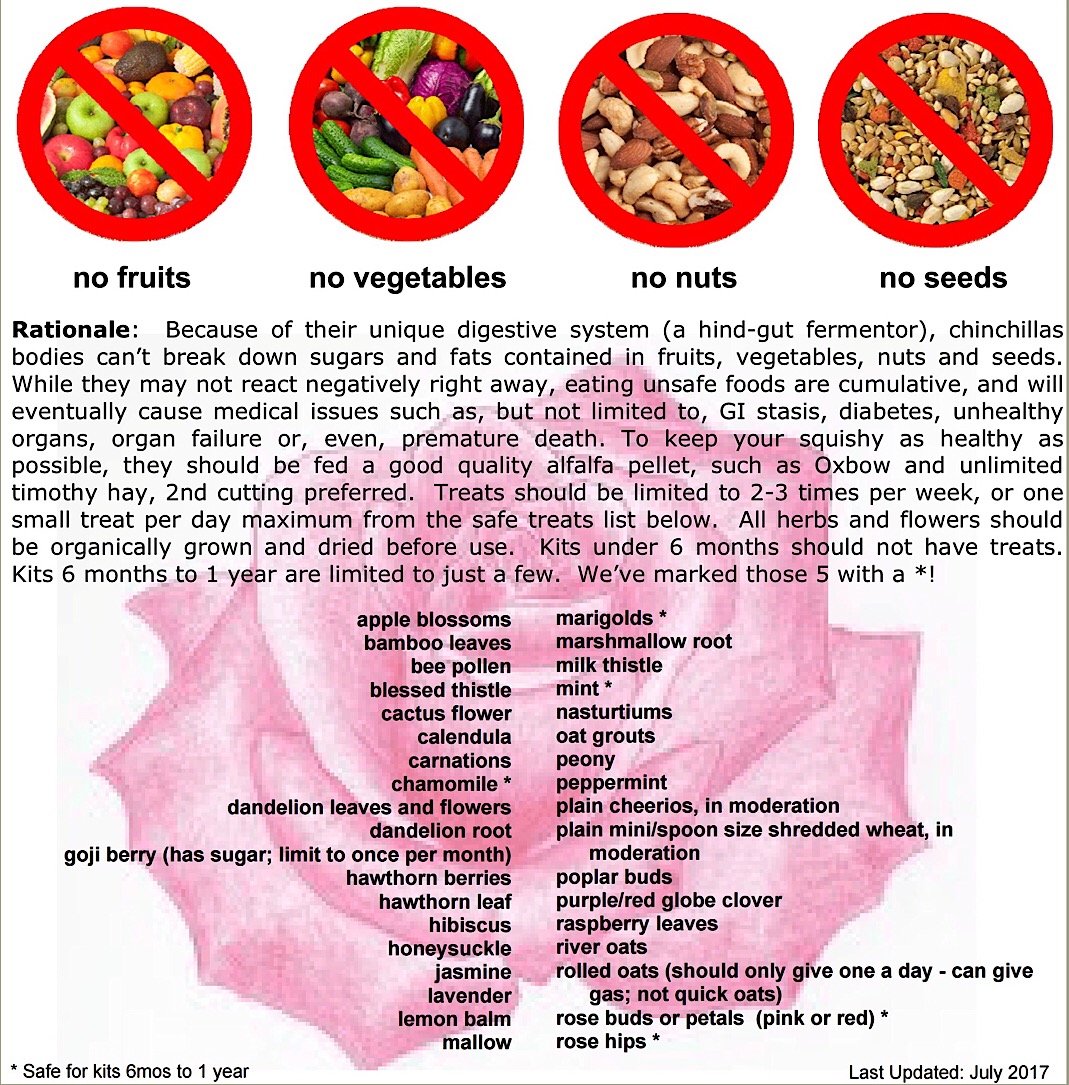 |
||||||||
|---|---|---|---|---|---|---|---|---|
Feeding |
||||||||
|
||||||||
Chinchillas in the wild live in a very arid and dry area. Because of this, they have a fairly unique digestive system thus care must be taken in what they eat to promote a long and healthy life. The biggest 2 things to avoid are sugars and fats. Things like fruits, vegetables, nuts and seeds are packed with sugar and/or fat and should be avoided at all costs. Negative effects are not instantaneous but cumulative and can seriously reduce their lifespan and lead to serious and expensive medical problems.
|
||||||||
Click on Flag to Purchase |
||
|---|---|---|

Oxbow Chinchilla Essentials |

Mazuri Chinchilla |

Science Select Chinchilla |
Hay
Hay is critical to the health and well being of small animals. It helps file down the teeth and adds much needed fiber to their diet. Just like people, pets benefit from some variety in their daily diet. We all know our beloved chins can be extremely picky eaters. Each type of hay has a different taste and texture, some are sweeter or softer than others. When mixed in with their primary hay, these various textures and tastes will encourage your chinchilla to eat more hay. PLEASE NOTE: The stacks/cubes should not be the primary source of hay as they lack the length to grind the teeth down.
Texture = On a scale of 1 to 5, with 1 being soft and 5 being crunchy
Timothy - Taste 3, Texture 3
This is the primary type of hay that should be fed. It should always be available and chins can eat as much as they want. It�s available in 3 different cuttings - first, second and third. The first is more of the stalk parts than leafy. The second is an even mix of leafy and stalks. The third is more leafy than stalks. Chinchillas are extremely picky, but the second cutting seems to be a favorite across the board. You should only try the other cuttings if you are having problems getting your chinchilla to eat their hay. Most chinchillas will not pick up hay that had fallen to the floor, so to help reduce waste, we�ve found if you cut your hay into 3-4" pieces, less falls so there is less waste. The longer pieces stick together so when they pull 1 out, it tends to pull 2-3 more out with it.
Alfalfa - Taste 1, Texture 2
Alfalfa hay is not a grass hay, it�s in the legume family. It has higher protein and less fiber so it�s essential for growth. It can be used sparingly as a treat hay, but it does not contain the fiber that a grass hay provides. For kits, birth to 6 months, they should be offered both alfalfa and Timothy. You can start offering alfalfa to expecting mothers during the last few weeks of pregnancy.
Orchard Grass - Taste 2, Texture 2
Like other long-strand grass hays, the soft-textured Orchard Grass Hay is high in fiber, low in protein and supports the health of small herbivores by stimulating digestion, preventing obesity and making mealtime more appealing.
Botanical - Taste 2, Texture 3
Botanical Hay Is A Rich Blend Of Herbs United With Western Timothy Hay To Stimulate Your Pet's Appetite For Hay And Create A Relaxing Getaway In Your Pet's Habitat.
Meadow - Taste 3, Texture 4
Meadow Hay Is Composed Of A Variety Of Naturally Occurring Grass Hays Providing An Enticing Combination Of Textures, Fragrances And Flavors.
Oat - Taste 4, Texture 5
Your animals will love the immature oat grain that is attached in the head and will benefit greatly from the fiber in the leaf and stem. Oat Hay is a good source of fiber and gives variety to your animal's diet.
Wheat
Similar to oat hay, a great source of fiber.
Barley
Like oat and wheat, but can cause gas and bloating so we suggest you skip this one!
While Timothy should be the primary type of hay fed, Oxbow does suggest you add in some of the other types of hay. This video explains The Importance of Feeding a Variety of Hay.
Treats
Treats should be limited to no more than 1 small pinch per day. Goji berries should be limited to 1 per month, or you can split one in half and give half twice a month. Kits under 6 months of age should not have any treats and kits 6 months to 1 year are limited and are marked with a * in our list below.
Treats Considered Safe

Let us help you give your pet chinchilla
the healthiest and longest life possible!
Join Us |
|---|
|
|
















